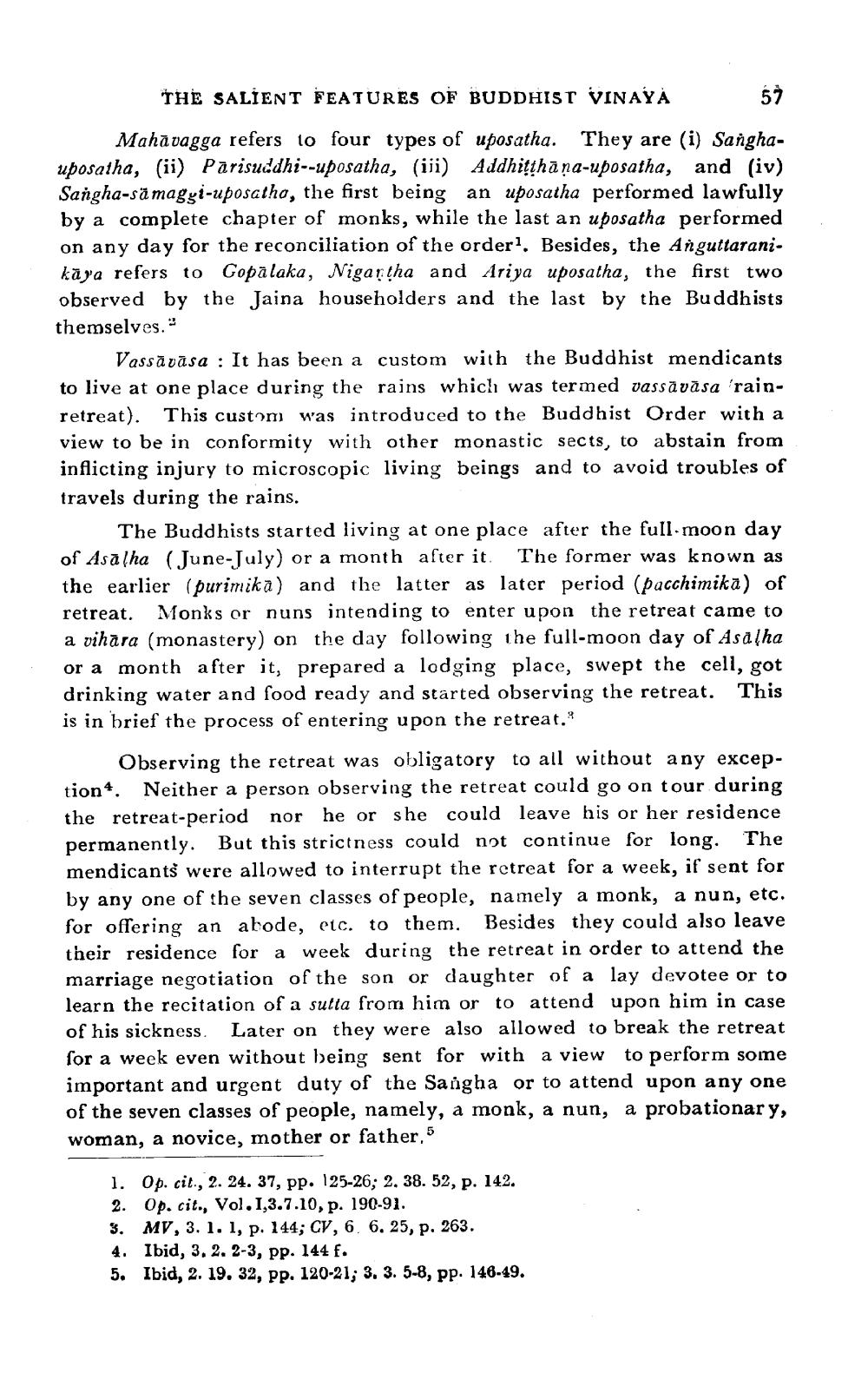________________
THE SALİENT FEATURES OF BUDDHIST VINAYÀ 57 Mahāvagga refers to four types of uposatha. They are (i) Sanghauposatha, (ii) Parisuddhi--uposatha, (iii) Addhitthāņa-uposatha, and (iv) Sangha-sā magyi-uposatho, the first being an uposatha performed lawfully by a complete chapter of monks, while the last an uposatha performed on any day for the reconciliation of the order1. Besides, the Anguttaranikāya refers to Gopalaka, Nigartha and Ariya uposatha, the first two observed by the Jaina householders and the last by the Buddhists themselves."
Vassāvāsa : It has been a custom with the Buddhist mendicants to live at one place during the rains which was termed vassaväsa 'rainretreat). This custom was introduced to the Buddhist Order with a view to be in conformity with other monastic sects, to abstain from inflicting injury to microscopic living beings and to avoid troubles of travels during the rains.
The Buddhists started living at one place after the full moon day of Asalha (June-July) or a month after it. The former was known as the earlier (purimika) and the latter as later period (pacchimika) of retreat. Monks or nuns intending to enter upon the retreat came to a vihara (monastery) on the day following the full-moon day of Asalha or a month after it, prepared a lodging place, swept the cell, got drinking water and food ready and started observing the retreat. This is in brief the process of entering upon the retreat."
Observing the retreat was obligatory to all without any exception. Neither a person observing the retreat could go on tour during the retreat-period nor he or she could leave his or her residence permanently. But this strictness could not continue for long. The mendicants were allowed to interrupt the retreat for a week, if sent for by any one of the seven classes of people, namely a monk, a nun, etc. for offering an abode, etc. to them. Besides they could also leave their residence for a week during the retreat in order to attend the marriage negotiation of the son or daughter of a lay devotee or to learn the recitation of a sutta from him or to attend upon him in case of his sickness. Later on they were also allowed to break the retreat for a week even without being sent for with a view to perform some important and urgent duty of the Sangha or to attend upon any one of the seven classes of people, namely, a monk, a nun, a probationary, woman, a novice, mother or father, 5
1. Op. cit., 2. 24. 37, pp. 125-26; 2. 38. 52, p. 142. 2. Op. cit., Vol. 1,3.7.10, p. 190-91. 3. MV, 3. 1. 1, p. 144; CV, 6. 6. 25, p. 263. 4. Ibid, 3. 2. 2-3, pp. 144 f. 5. Ibid, 2. 19. 32, pp. 120-21; 3. 3. 5-8, pp. 146-49.




